-
 Bitcoin
Bitcoin $118400
0.47% -
 Ethereum
Ethereum $3836
2.20% -
 XRP
XRP $3.157
2.98% -
 Tether USDt
Tether USDt $0.9999
-0.03% -
 BNB
BNB $801.5
1.31% -
 Solana
Solana $180.9
2.07% -
 USDC
USDC $0.9999
-0.02% -
 Dogecoin
Dogecoin $0.2225
2.50% -
 TRON
TRON $0.3285
-1.02% -
 Cardano
Cardano $0.7789
2.60% -
 Hyperliquid
Hyperliquid $43.60
2.39% -
 Sui
Sui $3.892
4.41% -
 Stellar
Stellar $0.4229
3.34% -
 Chainlink
Chainlink $18.01
3.98% -
 Hedera
Hedera $0.2745
6.77% -
 Bitcoin Cash
Bitcoin Cash $582.3
3.38% -
 Avalanche
Avalanche $23.77
1.04% -
 Ethena USDe
Ethena USDe $1.001
0.01% -
 Toncoin
Toncoin $3.493
3.59% -
 Litecoin
Litecoin $110.0
2.48% -
 UNUS SED LEO
UNUS SED LEO $8.936
-0.37% -
 Shiba Inu
Shiba Inu $0.00001304
2.49% -
 Uniswap
Uniswap $9.999
1.09% -
 Polkadot
Polkadot $3.897
3.26% -
 Monero
Monero $308.6
-0.83% -
 Dai
Dai $0.9999
-0.01% -
 Bitget Token
Bitget Token $4.504
-0.04% -
 Pepe
Pepe $0.00001154
2.95% -
 Cronos
Cronos $0.1471
3.06% -
 Ethena
Ethena $0.6691
19.53%
What signal does it send when the VWAP crosses the daily average price line?
When VWAP crosses above the daily average price on high volume, it signals strong buying pressure, often indicating bullish momentum in crypto markets.
Jul 29, 2025 at 07:14 pm
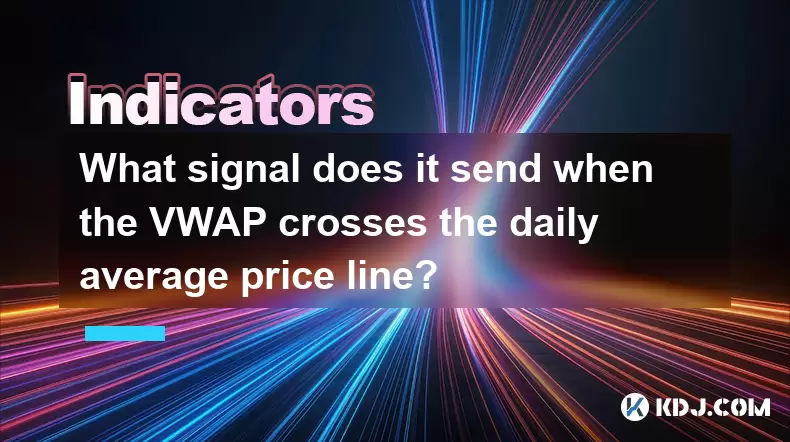
Understanding VWAP and Daily Average Price
The Volume Weighted Average Price (VWAP) is a trading benchmark that reflects the average price a cryptocurrency has traded at throughout the day, based on both volume and price. It is calculated by adding up the dollars traded for every transaction (price multiplied by the number of tokens traded) and then dividing by the total shares traded. This makes VWAP particularly useful for assessing the true average cost of a cryptocurrency over a trading session. In contrast, the daily average price line typically refers to a simple arithmetic mean of the high, low, open, and close prices over a 24-hour period. While VWAP is volume-sensitive, the daily average price does not account for trading volume, making it less dynamic in high-volatility environments.
When traders observe the VWAP crossing the daily average price line, it signals a shift in market sentiment influenced heavily by volume. The divergence or convergence between these two metrics can highlight whether the market is trading with or against the volume momentum. A crossover may suggest that recent trades are occurring at prices significantly different from the day’s overall average, indicating increased buying or selling pressure.
Interpreting the Direction of the Crossover
The significance of the VWAP crossing the daily average price line depends on the direction of the crossover. When VWAP moves above the daily average price, it indicates that the volume-weighted trades are occurring at higher price levels than the day’s simple average. This often reflects strong buying momentum and suggests that large market participants are accumulating positions at elevated prices. This could be interpreted as a bullish signal, especially if the crossover occurs during high-volume periods.
Conversely, when VWAP falls below the daily average price, it implies that the majority of trading volume is happening at lower price points. This may signal distribution or aggressive selling, particularly if it happens during the latter part of the trading session. In cryptocurrency markets, where price swings are frequent and pronounced, such a crossover can foreshadow a bearish continuation, especially if supported by increasing volume.
Volume Confirmation and Reliability of the Signal
The reliability of the VWAP crossing the daily average price line as a signal depends heavily on volume confirmation. A crossover that occurs on low volume may be a false signal or a short-term anomaly. Traders should always cross-verify the crossover with volume indicators such as On-Balance Volume (OBV) or Volume Profile. A strong volume spike during the crossover increases the likelihood that the move is significant and not just noise.
For example, if VWAP crosses above the daily average price with a 50% increase in volume compared to the 20-period average, this reinforces the idea that institutional or whale traders are actively participating. In crypto markets, where manipulation and wash trading can occur, volume authenticity is critical. Using on-chain volume data or trusted exchange APIs can help filter out misleading signals.
Application in Intraday Cryptocurrency Trading
Traders can use the VWAP and daily average price crossover as part of an intraday strategy, particularly in high-frequency or swing trading setups. To implement this:
- Add both VWAP and the daily average price line to your trading chart using platforms like TradingView or CoinGecko Pro.
- Set the chart to a 15-minute or 1-hour timeframe for intraday precision.
- Enable volume indicators to monitor activity during the crossover.
- Use price action confirmation such as bullish engulfing candles or breakouts from key resistance levels when VWAP crosses above the daily average.
- Consider short entries when VWAP crosses below the daily average and is confirmed by bearish candlestick patterns like dark cloud cover.
This strategy works best in liquid markets such as BTC/USDT or ETH/USDT pairs, where volume data is more reliable. Less liquid altcoins may produce misleading crossovers due to thin order books and low trade frequency.
Combining with Other Technical Indicators
To enhance the accuracy of the VWAP and daily average price crossover, traders often combine it with other technical tools. For instance:
- Use the Relative Strength Index (RSI) to determine if the market is overbought or oversold at the time of the crossover.
- Apply Bollinger Bands to assess volatility; a crossover occurring near the upper band with high RSI may indicate an overextended move.
- Overlay moving averages such as the 20-period EMA to confirm trend direction.
- Monitor order book depth on exchanges like Binance or Bybit to see if large buy or sell walls align with the crossover.
When VWAP crosses above the daily average price and RSI is below 70 (not overbought), it may suggest sustainable upward momentum. Conversely, if RSI is already above 70, the move could be a trap. Similarly, a crossover below the average price with RSI below 30 might indicate capitulation, while one above 50 could confirm a strong downtrend.
Backtesting the Crossover Strategy
Before deploying any strategy based on VWAP and daily average price crossovers, backtesting is essential. Historical data for major cryptocurrencies is widely available through APIs from exchanges or platforms like Kaiko and CryptoCompare. To backtest effectively:
- Export at least 90 days of 1-hour candle data for your chosen pair.
- Calculate both VWAP and the daily average price for each session.
- Identify all crossover points and tag them as bullish or bearish.
- Measure price movement in the next 4 to 12 hours after each crossover.
- Filter results by volume thresholds to eliminate noise.
- Evaluate win rate, average profit/loss, and maximum drawdown.
This process helps determine whether the signal performs consistently across different market conditions such as trending, ranging, or volatile phases.
Frequently Asked Questions
What is the difference between VWAP and the daily average price?
VWAP incorporates volume into its calculation, giving more weight to prices with higher trading activity. The daily average price is a simple mean of key price points (open, high, low, close) and does not consider volume, making it less responsive to actual market dynamics.
Can the VWAP and daily average price crossover be used on weekly charts?
While technically possible, the VWAP is primarily designed for intraday use and resets at the start of each trading session. On weekly charts, the daily reset makes VWAP less meaningful. For longer timeframes, traders use Volume-Weighted MACD or Cumulative VWAP instead.
Does this signal work for all cryptocurrencies?
The signal is most reliable for highly liquid cryptocurrencies like Bitcoin and Ethereum. For low-cap altcoins with erratic volume and price manipulation risks, the crossover may generate frequent false signals.
How do I add VWAP and daily average price to my trading platform?
On TradingView, search for “VWAP” in the indicators tab and apply it. For the daily average price, create a custom script: study("Daily Avg Price"); avg = (open + high + low + close) / 4; plot(avg). Save and apply to your chart.
Disclaimer:info@kdj.com
The information provided is not trading advice. kdj.com does not assume any responsibility for any investments made based on the information provided in this article. Cryptocurrencies are highly volatile and it is highly recommended that you invest with caution after thorough research!
If you believe that the content used on this website infringes your copyright, please contact us immediately (info@kdj.com) and we will delete it promptly.
- Pudgy Penguins Price Prediction: Buying Opportunity or Insider Dump?
- 2025-07-31 18:50:35
- Penny Coin Power: Unearthing 20x Potential in Undervalued Crypto
- 2025-07-31 20:10:14
- Shrapnel, GalaChain, and China Gaming: A New Frontier
- 2025-07-31 19:10:35
- Mutuum Finance, Bitcoin, and Market Analysis: Decoding the Latest Trends
- 2025-07-31 19:30:13
- Dogecoin Howl: Bullish Signals and Analyst Bites – Is the Meme Coin Ready to Pounce?
- 2025-07-31 18:30:16
- Decoding Crypto Presales, Ethereum's Role, and Navigating a Tricky Altcoin Season
- 2025-07-31 18:30:16
Related knowledge
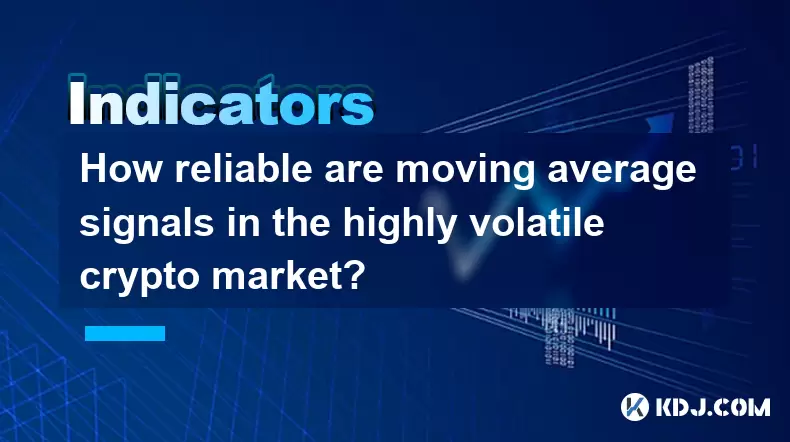
How reliable are moving average signals in the highly volatile crypto market?
Jul 31,2025 at 08:36pm
Understanding Moving Averages in Cryptocurrency TradingMoving averages (MAs) are among the most widely used technical indicators in the cryptocurrency...
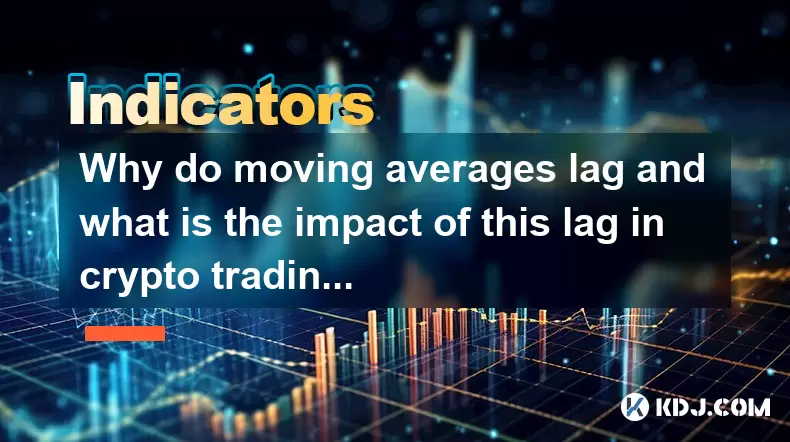
Why do moving averages lag and what is the impact of this lag in crypto trading?
Jul 31,2025 at 08:07pm
Understanding the Concept of Moving Averages in Crypto TradingMoving averages are among the most widely used technical indicators in cryptocurrency tr...
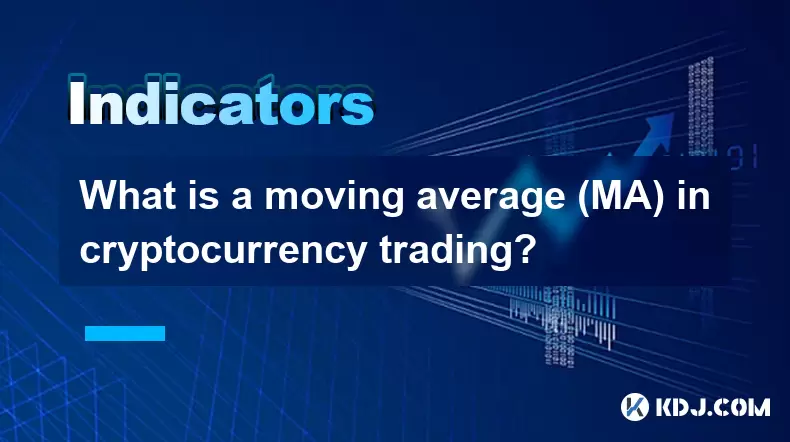
What is a moving average (MA) in cryptocurrency trading?
Jul 31,2025 at 06:30pm
Understanding the Concept of Moving Average (MA)A moving average (MA) is a widely used technical analysis tool in cryptocurrency trading that helps sm...
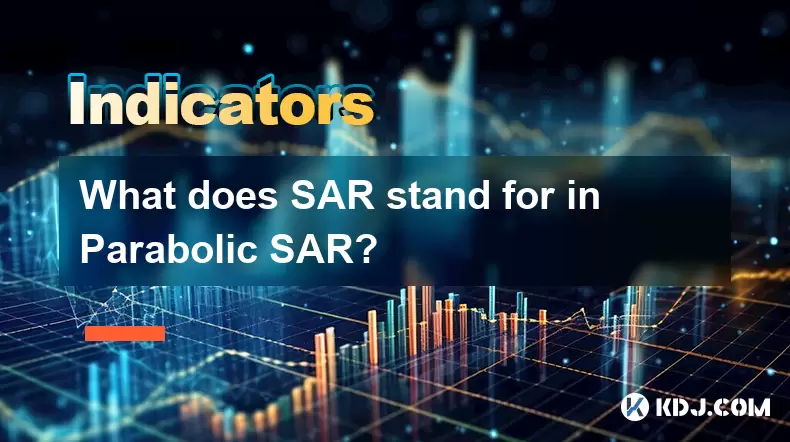
What does SAR stand for in Parabolic SAR?
Jul 31,2025 at 06:49pm
Understanding the Meaning of SAR in Parabolic SARIn the context of technical analysis in the cryptocurrency market, SAR stands for 'Stop and Reverse' ...
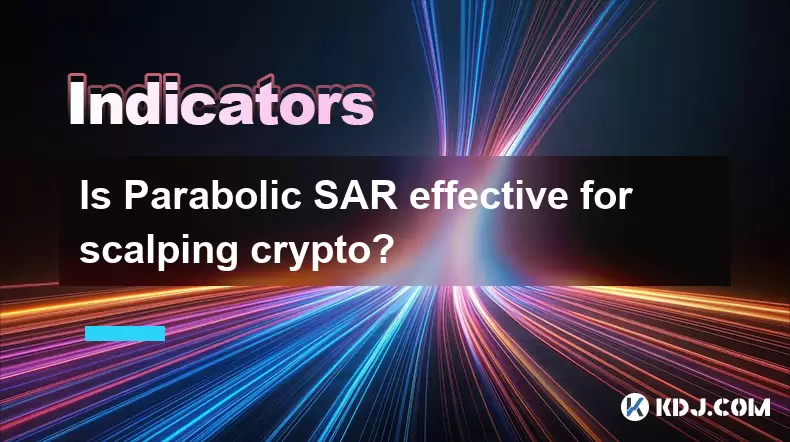
Is Parabolic SAR effective for scalping crypto?
Jul 31,2025 at 08:29pm
Understanding Parabolic SAR in Cryptocurrency TradingThe Parabolic SAR (Stop and Reverse) is a technical indicator developed by J. Welles Wilder, prim...
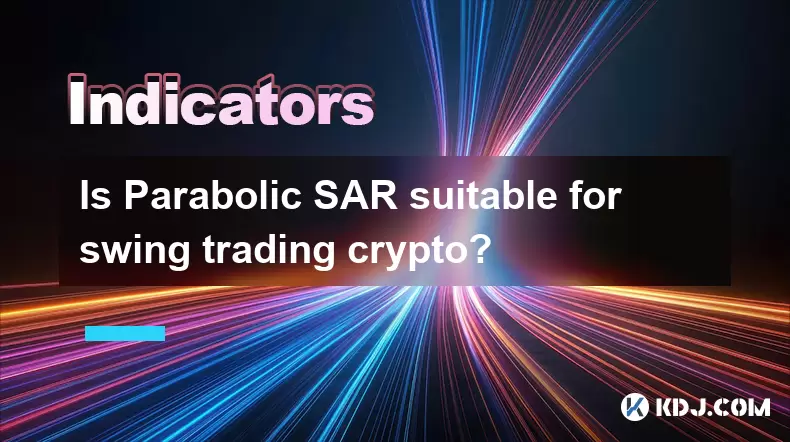
Is Parabolic SAR suitable for swing trading crypto?
Jul 31,2025 at 05:29pm
Understanding Parabolic SAR in Cryptocurrency TradingThe Parabolic SAR (Stop and Reverse) is a technical indicator developed by J. Welles Wilder that ...

How reliable are moving average signals in the highly volatile crypto market?
Jul 31,2025 at 08:36pm
Understanding Moving Averages in Cryptocurrency TradingMoving averages (MAs) are among the most widely used technical indicators in the cryptocurrency...

Why do moving averages lag and what is the impact of this lag in crypto trading?
Jul 31,2025 at 08:07pm
Understanding the Concept of Moving Averages in Crypto TradingMoving averages are among the most widely used technical indicators in cryptocurrency tr...

What is a moving average (MA) in cryptocurrency trading?
Jul 31,2025 at 06:30pm
Understanding the Concept of Moving Average (MA)A moving average (MA) is a widely used technical analysis tool in cryptocurrency trading that helps sm...

What does SAR stand for in Parabolic SAR?
Jul 31,2025 at 06:49pm
Understanding the Meaning of SAR in Parabolic SARIn the context of technical analysis in the cryptocurrency market, SAR stands for 'Stop and Reverse' ...

Is Parabolic SAR effective for scalping crypto?
Jul 31,2025 at 08:29pm
Understanding Parabolic SAR in Cryptocurrency TradingThe Parabolic SAR (Stop and Reverse) is a technical indicator developed by J. Welles Wilder, prim...

Is Parabolic SAR suitable for swing trading crypto?
Jul 31,2025 at 05:29pm
Understanding Parabolic SAR in Cryptocurrency TradingThe Parabolic SAR (Stop and Reverse) is a technical indicator developed by J. Welles Wilder that ...
See all articles

























































































